|
GROWTH AND CARCASS CHARACTERISTICS OF
GROWING-FINISHING PIGS FED EITHER AN ANTIBIOTIC OR A PROBIOTIC
L. L. Burnham1,
C. R. Richardson1, A. Guye1, G. A. Nunnery1,
R. A. M. Schmitt2,
D. A. Haverkamp3,
and S. W. Kim1
1Texas
Tech University, 2Seaboard Farms, Inc., 3Natur’s
Way, Inc.
Objective
- The purpose
of this experiment was to demonstrate that a probiotic, Multiple
Stabilized enzymes (MSE Dry Microbial Concentrate), can successfully
replace a feed-additive antibiotic (Tylan®) in diets for
growing-finishing pigs.
Diets
- Basal diets contained 18.2 and 3.36; 15.5 and 3.37; and 14.7% CP
and 3.38 Mcal/kg ME for the grower, finisher I and finisher II
phases, respectively. Pigs were fed for 42 d (grower), 58 d
(finisher I), and 17 d (finisher II). After the pigs reached 120 kg,
they were shipped to Seaboard Farms in Guymon, OK for slaughter and
collection of carcass data.
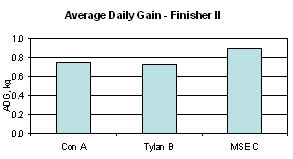 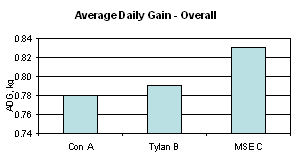
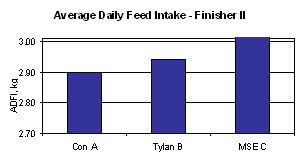
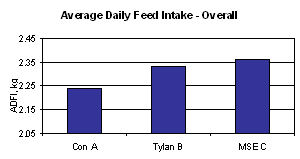
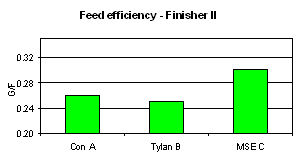
Carcass data –
There
were no significant differences between any the treatments for any
carcass characteristics measured (trim, hot carcass weight, dressing
percentage, backfat, loin muscle depth, percent lean).
Conclusions
- Growing-finishing pigs fed MSE performed as well as or better than
growing-finishing pigs fed Tylan®. Feed-additive antibiotics should
be included as a dietary treatment when a probiotic is evaluated.
Probiotics provide a viable alternative to feed-additive
antibiotics. |

